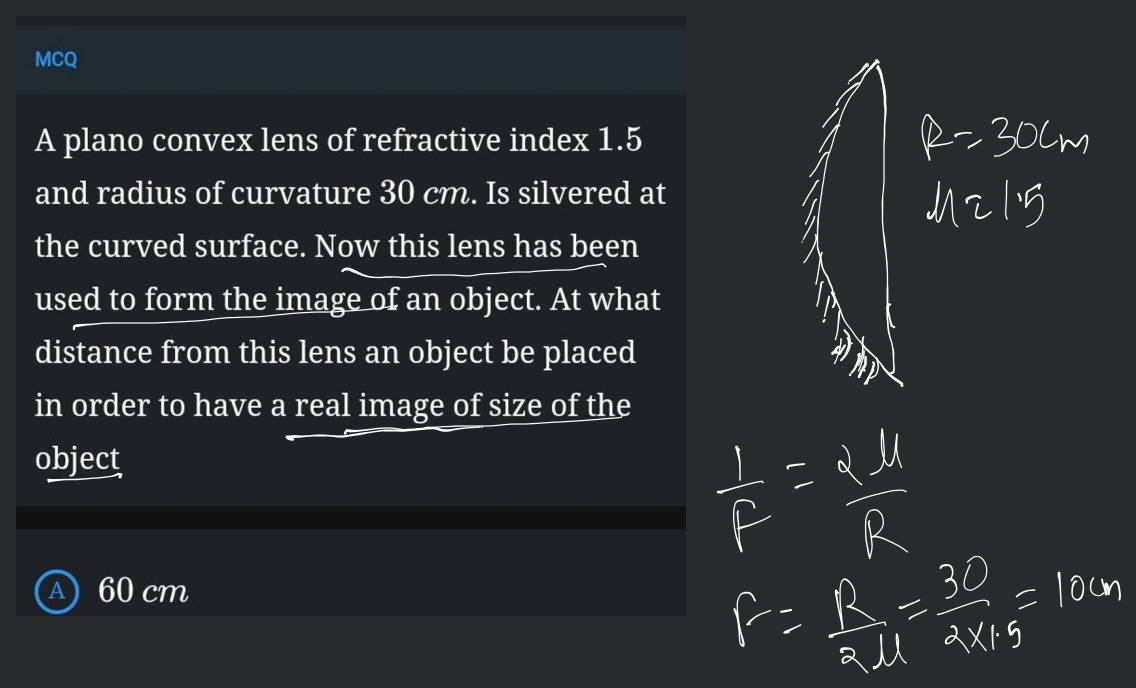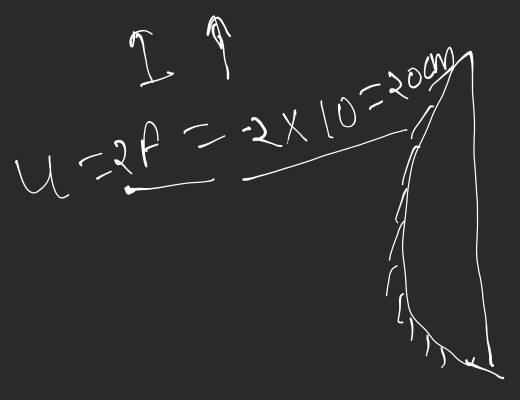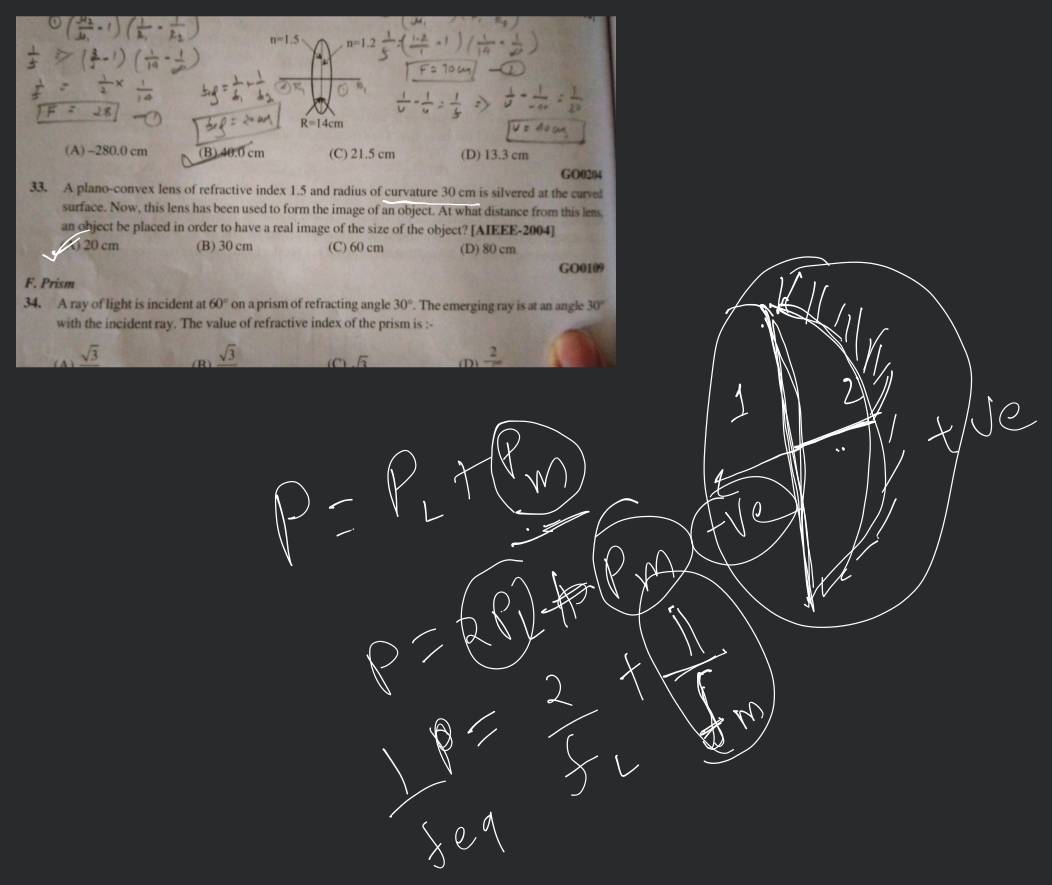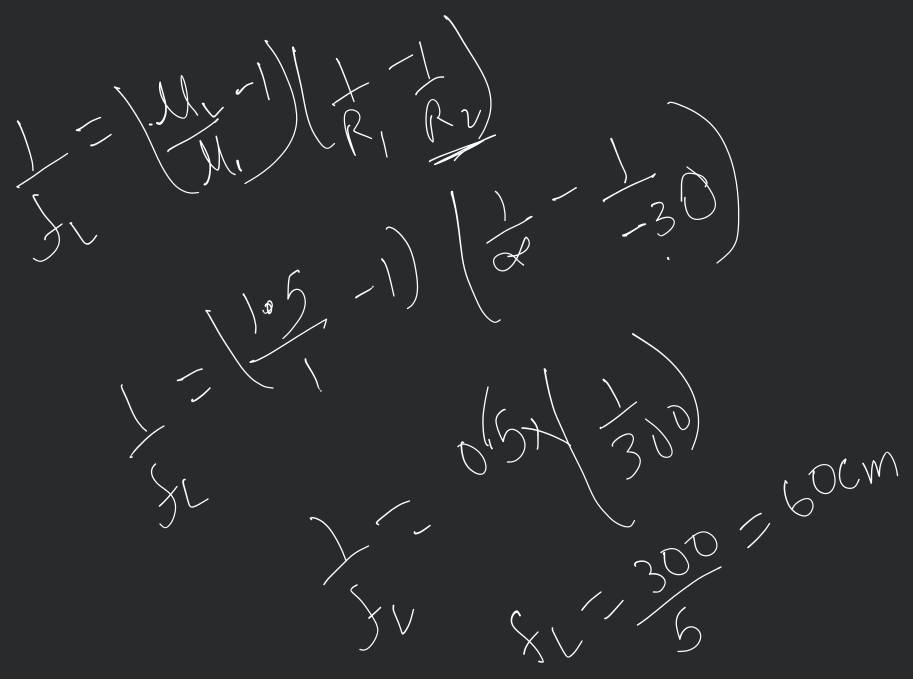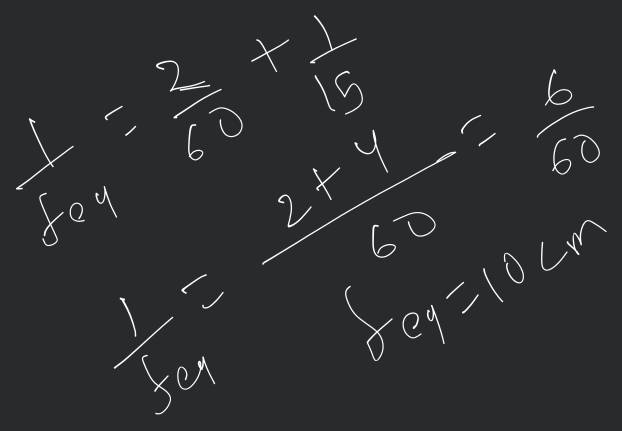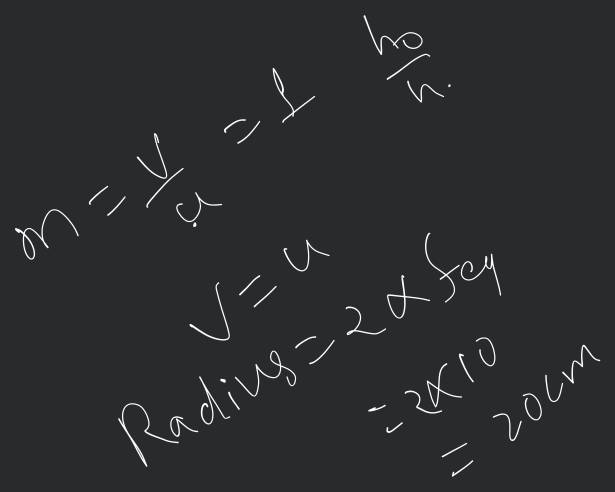Question
Medium
Solving time: 3 mins
A plano-convex lens of refractive index and radius of curvature is silvered at the curved surface. Now, this lens has been used to form the image of an object. At what distance from this lens, an object be placed in order to have a real image of the size of the object
Found 4 tutors discussing this question
Discuss this question LIVE
12 mins ago
 Text solution
Text solution Verified
Verified
A plano-convex lens behaves as a concave mirror, if its one surface (curved) is silvered. The rays refracted from plane surface are reflected from curved surface and again refract from plane surface. Therefore, in this lens two refractions and one reflection occur.
Let the focal length of silvered lens be .
where, focal length of lens before silvering,
focal length of spherical mirror.
Now,
Here,
or
or
Hence, from Eq. (i), we get
Again given that,
Size of object Size of image
i.e.,
or
Thus, from lens formula,
Hence, to get a real image, object must be placed at a distance 20 cm on the left side of lens
Let the focal length of silvered lens be .
where, focal length of lens before silvering,
focal length of spherical mirror.
Now,
Here,
or
or
Hence, from Eq. (i), we get
Again given that,
Size of object Size of image
i.e.,
or
Thus, from lens formula,
Hence, to get a real image, object must be placed at a distance 20 cm on the left side of lens
Was this solution helpful?
98
Share
Report
Filo tutor solutions (3)
Learn from their 1-to-1 discussion with Filo tutors.
3 mins
Uploaded on: 3/3/2023
Was this solution helpful?
133
Share
Report
7 mins
Uploaded on: 5/5/2023
Was this solution helpful?
144
Share
Report

One destination to cover all your homework and assignment needs
Learn Practice Revision Succeed

Instant 1:1 help, 24x7
60, 000+ Expert tutors

Textbook solutions
Big idea maths, McGraw-Hill Education etc

Essay review
Get expert feedback on your essay

Schedule classes
High dosage tutoring from Dedicated 3 experts
Questions from JEE Mains 2004 - PYQs
Question 1
Medium
Views: 5,520
(a) decrease by a factor of 4
(b) increase by a factor of 4
(c) decrease by a factor of 2
(d) increase by a factor of 2
Question 2
Easy
Views: 6,209
(a)
(b)
(c)
(d)
Question 3
Easy
Views: 5,489
(a)
(b)
(c)
(d)
Practice questions from Arihant Physics JEE Main Chapterwise Solutions (2019-2002) (Arihant)
Question 1
Medium
Views: 5,856
Question 2
Medium
Views: 5,938
To get the sharp image again, the screen is shifted by a distance . Then, is
(a) 0
(b) away from the lens
(c) away from the lens
(d) towards the lens
Question 3
Medium
Views: 6,155
(a)
(b)
(c)
(d)
Practice questions from Ray Optics and Optical Instruments in the same exam
Question 1
Medium
Views: 5,942
Question 2
Medium
Views: 5,880
(a)
(b)
(c)
(d)
Practice more questions from Ray Optics and Optical Instruments
Question 1
Medium
Views: 5,769
Question 2
Easy
Views: 5,639
Question 3
Easy
Views: 5,561
Practice questions on similar concepts asked by Filo students
Question 1
Views: 5,344
Question 2
Views: 6,016
Question 4
Views: 5,096


Stuck on the question or explanation?
Connect with our Physics tutors online and get step by step solution of this question.
231 students are taking LIVE classes
| Question Text | A plano-convex lens of refractive index and radius of curvature is silvered at the curved surface. Now, this lens has been used to form the image of an object. At what distance from this lens, an object be placed in order to have a real image of the size of the object |
| Updated On | May 5, 2023 |
| Topic | Ray Optics and Optical Instruments |
| Subject | Physics |
| Class | Class 12 |
| Answer Type | Text solution:1 Video solution: 3 |
| Upvotes | 491 |
| Avg. Video Duration | 6 min |



